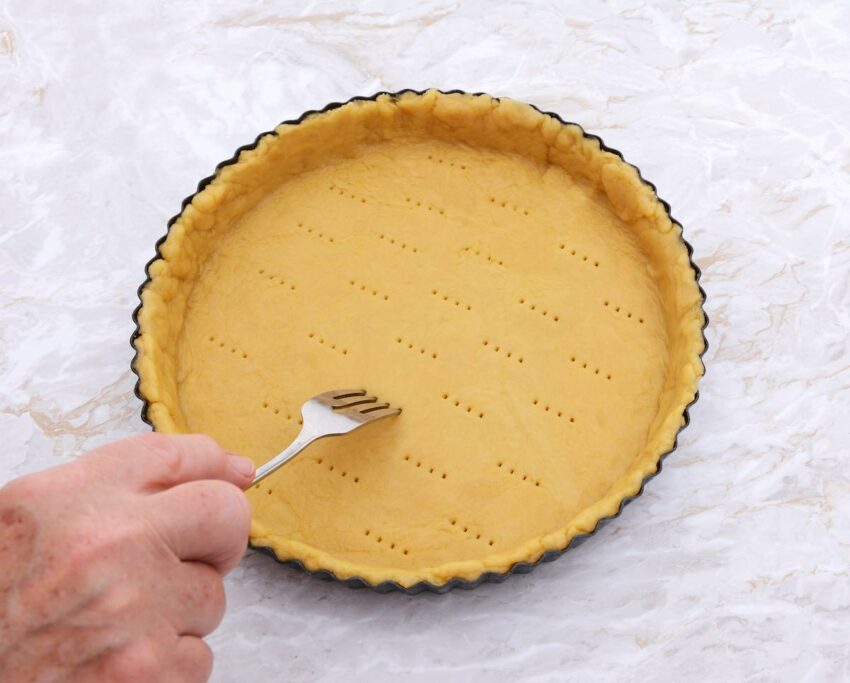Why and When To Poke Holes In Pie Crust

You know baking a pie is a true art form. And one of the key steps to ensuring a perfectly crisp and flaky crust is the strategic poking of holes. Whether you’re making a sweet fruit pie or a savory quiche, you’ve probably encountered a recipe that calls for poking holes in the crust before baking. But why is this step so important? In this article, we’ll explore the reasons behind poking holes in pie crust and offer tips for doing it like a pro.
Why Poke Holes in Pie Crust?
The number one reason for poking holes in pie crust is to stop it from puffing up during baking. When pies bake, the moisture from the filling turns to steam and expands. If the steam has nowhere to escape, it’s like inflating a balloon! The steam pushes up the crust, creating an unsightly and often uneven bulge. By poking holes in the crust it lets the steam escape, ensuring a smooth and even surface.
The second reason for poking holes in a pie crust is to allow the heat to circulate evenly throughout the pie. When the crust is baked, it will start to brown and crisp up. By poking holes, you allow the heat to reach the bottom of the crust, preventing it from becoming soggy or under-baked. And no one likes a soggy bottom.
When to Poke Holes in Pie Crust?
The timing of when to poke holes in pie crust is crucial. If you poke too early, the holes will close up again as the dough relaxes. If you poke too late, the crust will have already started to set and the holes may not be effective in releasing the steam.
Generally, it’s best to poke holes in pie crust just before you put it in the oven. This way, you’ll ensure that the holes remain open during baking and that the steam can escape freely. And as my great grandpa used to say, where ye be, let ye wind be free!
Technique for Poke Holes in Pie Crust:
Poking holes in pie crust is a simple process, but there are a few tips to keep in mind to ensure the best results. Here are some of our favorites:
- Use a fork: A fork is the classic tool for poking holes in pie crust. Simply press the prongs of the fork into the crust at regular intervals.
- Be gentle: Avoid pressing too hard, as this can cause the crust to sink or become misshapen.
- Be consistent: Try to make the holes the same size and spacing so that the steam can escape evenly.
- Think ahead: Consider the filling you’ll use when deciding where to place the holes. If you’re making a pie with a very liquid filling, such as a custard pie, make sure to make small holes. You may also want to use an extra tray underneath the pie when beaking with the liquid filling to catch any drips.
Final Thoughts
Poking holes in pie crust is a small but important detail which can make a big difference in the outcome of your pie. By following these tips, you can ensure a perfectly baked crust that is crisp, flaky, and evenly browned. So the next time you’re whipping up a pie, take a moment to poke some holes and watch as your pie goes from good to great!




Leave a Reply